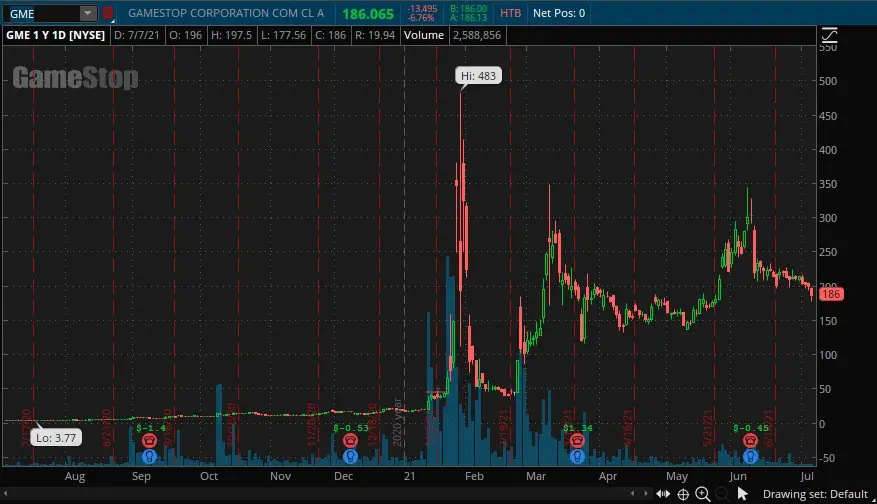Malcom Baker and Jeffrey Wurgler define investor sentiment best as “Investor sentiment, defined broadly, is a belief about future cash flows and investment risks that is not justified by the facts at hand. ” Citation
Essentially you can think of investor sentiment as a general market ‘feeling’ for a stock or asset. Does the market think the stock is going to go up? Then investor sentiment will be up for that stock/asset.
Likewise does the market think that that the stock is going to go down? Then investor sentiment will be down for that stock/asset.
Understanding investor sentiment will allow you to position an investment properly and make great returns on capital by profiting off the markets overall feeling towards a stock.
Let’s jump right in on how investor sentiment affects the stock market and how to calculate it.

How does Investor Sentiment Affect the Market
In the most basic sense investor sentiment increases volume on a stock and will eventually lead to either over valuation or under valuation. This inherently presents an opportunity for patient investors who can capitalize upon this trend.
This investor sentiment can have no valid base and can simply a result of a rumor. This is becoming more and more present in the market as more retiail investors begin to enter. These retail investors will buy a stock based off misplaced hype and rumors.
As such investor sentiment is starting to affect markets more and more. This is causing huge swings in stock prices. For example in January of 2021 the stock Gamestop rocketed up an amazing 2600% within two weeks of market sentiment.

Gamestop was never valued properly. It was overvalued and continued to be for several weeks leading up to the price explosion. How did this happen?
The answer lies in a coordinated strategic short squeeze attack on a couple funds by retail investors who grouped together online. For a very brief time the investor sentiment on GME pushed the stock way past its actual valuation point. Casing more established funds who failed to see this to lose huge amounts of capital.
This is an obviously extreme case. More often then not investor sentiment can be used to scan for the overall market’s view on how an asset will perform in the coming months.
For example, if a stock is pivoting its business model from a failing one to a profitable one then investor sentiment might be high even though the company has not demonstrated financial success. Several stocks on the market are plagued by this.
How to Find Investor Sentiment on a Stock
Let’s look at how we can find investor sentiment on a stock. Its rather easy and comes down to the two metrics of P/E and EPS.
P/E
P/E or Price to Earnings is a way to find out what the stock is trading at in relation to its earnings. Below is the calculation.
P/E = Current Market Capitalization (cap)/ Earnings
Market cap is how much a stock is valued within its market. If a company has a high market cap then its considered by the market to be very valuable. Logic would then dictate that the earnings of that company should also be high to justify the large market cap.

The current average P/E ratio across the S&P 500 is 34.31. This is the standard metric of the current P/E of the stock market in the United States.
If you see a company with a P/E in the 100’s or 200’s then investor sentiment is extremely high for that stock. That means that there is something the market is pricing in to the stock to keep it that high. Go figure out what it is, it might lead to an investment opportunity.
Likewise if a P/E is low or even negative then figure out what is depressing the stock’s value. A low P/E would indicate that the company’s market cap (price) should be higher in relation to its earnings. Investor sentiment is keeping this stock depressed, what is it?
As we can see P/E is a valuable tool that can lead help you gauge investor sentiment quickly. It can give you a ‘snapshot’ of the current market sentiment towards a stock.
EPS
EPS stands for Earnings Per Share. Below it the calculation for EPS.
EPS = Company’s profit / number of outstanding shares of common stock.
So how does P/E differ from EPS? Well P/E is based off total market cap which is what investors think the stock is worth, while EPS is the literal floor for the stocks price.
For example if a stock has an EPS of 0.01 then its priced at the lowest it will go because if you take the total profit the company made and divide it equally across all its shares on the market it would be valued exactly what the current stock price is.

Think of EPS as the floor of the stock, while P/E is hype driving the stock’s price. If you see a stock with a negative EPS then chances are it has only momentarily dropped and will rise shortly.
Always check the EPS and P/E in relation to each other. The EPS is going to give you book/ actual valuation of the company while the P/E is going to give you an idea of what the market is ‘pricing in’ or predicting the stock will do.
Conclusion
By understanding investor sentiment you will be able to start to predict movements within the market. The first trick to understand exactly how investor sentiment can affect the stock market. The next step is to then calculate how much investor sentiment has affected the potential investment.
As always if you like content like this then you should share this on social media and subscribe to the newsletter! Further, if you want to check out some research on good stocks check out our research posts!
Top 5 Sectors to Invest in for Massive Growth (2022-2030).
Until we meet again, I wish you the best of luck in your investments.
Sincerely,


